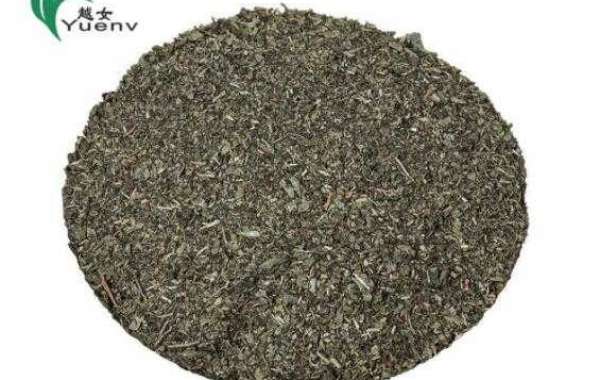Does the tea saponin of Green Tea 4011 have a "health function"?
Among them, the research on tea saponin as a "lipase inhibitor" is very interesting. Most people have excess fat in their diet, and fat contains much higher calories than other food components. Inhibiting the absorption of fat has become one of the main ideas of weight loss drugs. Fat in food is mainly in the form of triglycerides. In the digestive tract, fatty acids are hydrolyzed and released by lipase before they can be absorbed into the blood and re-synthesize triglycerides. If something inhibits the action of lipase in the digestive tract, fatty acids will not be released, and fat will not be absorbed and excreted. Orlistat, the only approved weight loss drug, works by inhibiting the activity of lipase. As a drug, orlistat naturally has some side effects, and there are many worries about using it.
Looking for lipase inhibitors from "natural foods" has a huge attraction, saponin is one of them, and tea saponin has also attracted a lot of attention. In 2001, the "International Journal of Obesity" published an interesting study. Researchers have extracted tea saponin from tea leaves for various experiments. In order to test whether it can inhibit the activity of lipase, researchers simulated the process of vegetable oil being broken down by lipase in a test tube. When tea saponin was not added, oleic acid produced by hydrolysis was detected as expected in the reaction mixture. If tea saponin is added to the reaction tube, the amount of oleic acid produced is reduced. When 2 mg of tea saponin extracted from green tea is added to each milliliter of solution, only 25% of the oleic acid is released under normal conditions; if the extract of oolong tea is added, no oleic acid is produced at all-that is That said, the activity of lipase was completely inhibited.
They fed the emulsified corn oil to the mice. Half of the mice ate the corn oil with tea saponin, and then tested the triglyceride content in their plasma. It was found that within the first two hours, whether or not tea saponin was eaten was almost the same, but from the third hour onwards, the rats who ate tea saponin had less than half of the triglyceride content in their plasma compared with those who did not eat tea saponin. . This shows that the tea saponin in the diet inhibits the absorption of fat and is also reflected in the synthesis of fat.
This result naturally made the researchers very excited, so they continued to toss the mice. In the next experiment, the female rats were divided into three groups, the three groups were of equal weight, and they were allowed to eat freely. After being fed the normal rat food for a week, the first group continued, the second group was fed a high-fat diet, and the third group was a high-fat diet but added tea saponin. For the next 10 weeks, they monitored the weight and food intake of the rats every week and found that the second and third groups of rats consumed significantly higher calories per week than the first group. Starting from the fifth week, The weight of the second group of mice was significantly higher than that of the first group, but there was no significant difference between the third group and the first group. By the end of the experiment, the average weight of the second group of mice was about 44 grams, while the first and third groups were about 38 grams.
In order to verify the effect of tea saponin, the researchers also collected the feces of mice for testing, and found that the triglyceride content in the feces of the third group of mice was 2.2 times that of the second group of mice, again indicating that tea saponin is indeed Inhibits the absorption of fat. In addition, they also cut off the uterine fat tissue of the mice and found that the weight of uterine fat in the rats who ate a high-fat diet was about twice that of the rats who ate the regular diet. But if tea saponin is added to the high-fat diet, the periuterine fat is basically the same as that of the mice on the regular diet. Further analysis also found that the diameter of the periuterine fat cells of the mice that ate a high-fat diet was significantly larger than that of the other two groups. This shows that tea saponin inhibits the absorption of fat in the diet, which is reflected in the synthesis of parauterine fat.
is effective against mice, only effective against mice
From an academic point of view, this research is very meaningful. It shows that tea saponin, a "natural product", has the ability to inhibit lipase, and this ability is directly reflected in the absorption and metabolism of fat. However, its "practical value" is actually not great—probably it can only be used by the advertising department of health care product manufacturers to write flicker copywriting. First, the amount of tea saponin used in the study was too large. 0.5% of tea saponin is added to the diet of mice. According to human food intake, it takes a few grams a day-and only a kilogram of dry tea can extract a few grams of tea saponin. Therefore, the tea saponin obtained by drinking tea is really far from producing weight loss. At most, it can only be said that "it is not a bad thing"-as for the benefits, it is better than nothing.
Tea saponin is not only found in tea, but also in the roots, stems, flowers and fruits of tea plants. In addition to tea tree, camellia and oil tea of the same family also contain it. In commercial production, tea leaves and tea cakes from tea seed oil can be used to extract tea saponin. Because tea saponin is often only one of the products of comprehensive utilization of these raw materials, the production cost is not high. If you really have to eat a few grams a day, ordinary people can still afford it. However, if you eat so much every day, you also need to consider safety-after all, "natural extraction" is never a guarantee of safety. For example, saponins have the ability to destroy red blood cell membranes and cause hemolysis-fortunately, when eaten in the stomach, it will not be absorbed into the blood by the gastrointestinal tract and will not meet with red blood cells. In this mouse experiment, the researchers also monitored the condition of the blood and confirmed that there was no hemolysis. But if people want to eat this amount, more extensive research is needed to verify whether it will cause other negative effects.
Chunmee Tea Company Although people's interest in various "natural extracts" is mainly "health effects", tea saponin is an exception. At least for now, its main use is an industrial emulsifier. A large area is bathing products. The good emulsifying properties and the origin of "natural extraction" make it more popular than "chemical emulsifiers" in bathing products. And perhaps the antibacterial ability that exists has given manufacturers one more marketing "selling point". Another big area is pesticides. Many pesticides are oily and need to be emulsified to be dispersed for easy spraying, so as to give full play to the effectiveness of pesticides. And its natural degradation characteristics make it more environmentally friendly. In addition to emulsifying properties, it also has certain biological activity. If it is mixed with some pesticides, it can increase its ability to kill certain pests.








